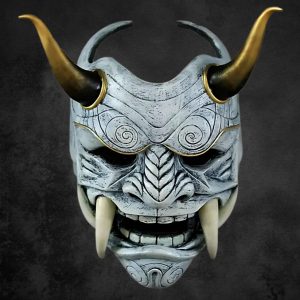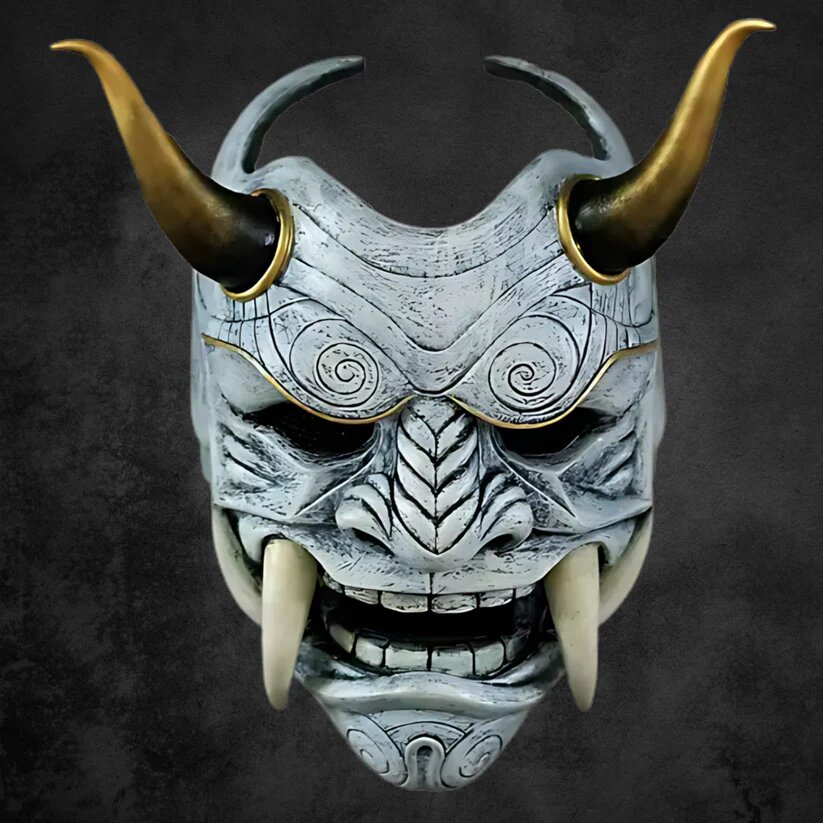
Japanese masks hold a profound cultural significance and an extensive history that spans centuries. These masks are not merely decorative items but embody the rich traditions and spiritual beliefs of Japan. Among the various types of Japanese masks, the Oni Maske stands out for its unique features and deep-rooted symbolism. This article delves into the fascinating world of Japanese masks, focusing on their history, types, and cultural importance.
The Origins and Evolution of Japanese Masks
Ancient Beginnings
The history of Japanese masks can be traced back to ancient times when they were primarily used in religious ceremonies and theatrical performances. Early masks were often crafted from natural materials such as wood, clay, and cloth. These masks were intricately designed and painted to represent various deities, spirits, and mythical creatures.
The Noh Theatre Influence
One of the most significant influences on the development of Japanese masks was the Noh theatre, a classical Japanese performance art that emerged in the 14th century. Noh masks are known for their simplicity and ability to convey a wide range of emotions. Each mask is meticulously carved and painted, with subtle changes in angles and lighting altering the perceived expression.
Types of Japanese Masks
Oni Maske
The Oni Maske is one of the most iconic and recognizable types of Japanese masks. Oni are mythical creatures often depicted as demons or ogres in Japanese folklore. These masks are characterized by their fierce and intimidating appearance, with sharp teeth, horns, and vivid colors. Oni masks are commonly used in festivals and theatrical performances to ward off evil spirits and bring good fortune.
Noh Masks
Noh masks are integral to Noh theatre, representing various characters such as gods, demons, and humans. These masks are characterized by their minimalistic design and the ability to convey different emotions based on the angle of the viewer. Common Noh masks include the Oni Mask, which represents demons or evil spirits.
Kabuki Masks
Kabuki theatre, another traditional Japanese performance art, also utilizes masks, although they are less prominent than in Noh theatre. Kabuki masks are often more exaggerated and colorful, reflecting the dramatic and dynamic nature of Kabuki performances.
Cultural Significance of Japanese Masks
Spiritual and Ritualistic Uses
Japanese masks have deep spiritual significance and are often used in religious rituals and festivals. They are believed to embody the spirits of gods, ancestors, and mythical creatures, serving as a medium between the physical and spiritual worlds. The Oni Mask, for instance, is used in ceremonies to drive away evil spirits and protect the community.
Artistic and Aesthetic Value
Beyond their spiritual and ritualistic uses, Japanese masks are also admired for their artistic and aesthetic value. The craftsmanship involved in creating these masks is meticulous, with artisans dedicating years to perfecting their skills. Each mask is a unique piece of art, reflecting the cultural heritage and artistic sensibilities of Japan.
Modern-Day Relevance
In contemporary Japan, traditional masks continue to hold cultural significance, although their use has evolved. They are often featured in festivals, cultural events, and as decorative items. The Oni Mask, in particular, remains a popular symbol during festivals such as Setsubun, where participants wear the masks and throw beans to ward off evil spirits.
Conclusion
Japanese masks are a testament to the rich cultural and historical heritage of Japan. From their ancient origins to their role in traditional theatre and festivals, these masks embody the spiritual beliefs, artistic traditions, and cultural values of the Japanese people. The Oni Mask, with its fierce and intimidating appearance, stands out as a powerful symbol in Japanese folklore and continues to captivate audiences worldwide.
